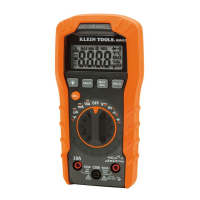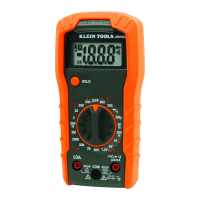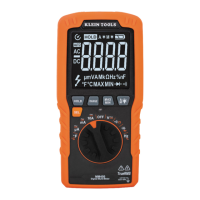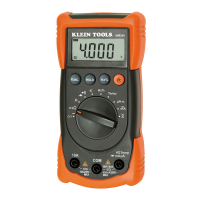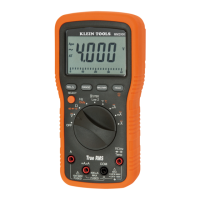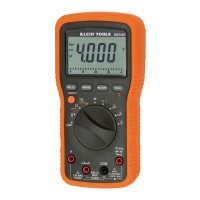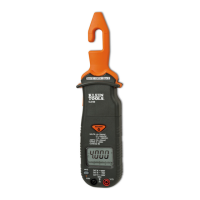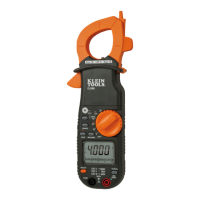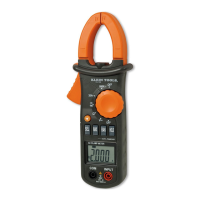5
ELECTRICAL SPECIFICATIONS
OTHER MEASUREMENT APPLICATIONS
Maximum Input: 100V RMS in Voltage setting,
600V DC or 600V AC RMS in all other settings
• Diode Test: 1.5 mA max, open circuit voltage 3.0V DC
• Continuity Check: Audible signal when resistance <50Ω,
max test current 0.35mA
• Low Impedence (Low Z): Input impedence >3kΩ
Max input 600V RMS
• Auto Power off: After ~30 minutes of inactivity
• Sampling Frequency: 3 samples per second
• Bar Graph: 41 segment, 10-15 samples per second
• Overload: "OL" indicated on display, 1000V RMS in voltage
settings, 600V RMS in all other settings
• Polarity: "-" on display indicates negative polarity
• Display: 3 ¾ digit, 4000 Count LCD, TRMS technology
WARNINGS
To ensure safe operation and service of the meter, follow these
instructions. Failure to observe these warnings can result in
severe injury or death.
• Before each use verify meter operation by measuring a known
voltage or current.
• Never use the meter on a circuit with voltages that exceed the
category based rating of this meter.
• Do not use the meter during electrical storms or in wet weather.
• Do not use the meter or test leads if they appear to be damaged.
• Use only with CAT IV rated test leads.
• Ensure meter leads are fully seated, and keep fingers away
from the metal probe contacts when making measurements.
• Do not open the meter to replace batteries while the probes
are connected.
• Use caution when working with voltages above 25V AC RMS
or 60V DC. Such voltages pose a shock hazard.
• To avoid false readings that can lead to electrical shock,
replace batteries when a low battery indicator appears.
• Do not attempt to measure resistance or continuity on a live
circuit.
• Always adhere to local and national safety codes. Use personal
protective equipment to prevent shock and arc blast injury
where hazardous live conductors are exposed.
• Meter is IP42 dust & water resistant. Following any contact
with water, thoroughly dry meter and test lead jacks prior to
subsequent use.
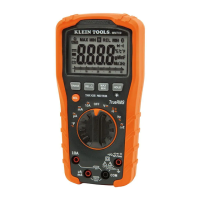
